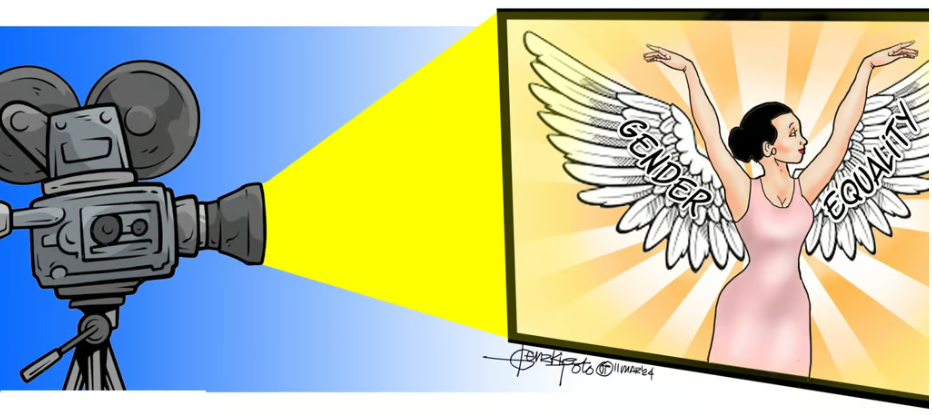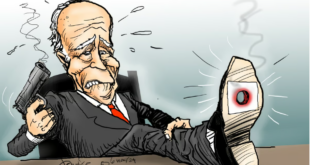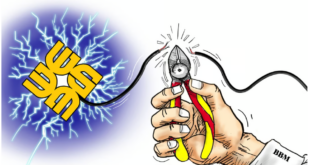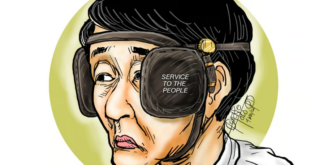A seemingly innocuous tool, language can perpetuate biases against women and desensitize societies to inequality.

Many Filipino women grace boardrooms and lead social movements, while some hold positions of power in the government. Yet, a persistent undercurrent of inequality lies under this veneer of progress and efforts to empower women.
United Nations Population Fund country representative Leila Joudane aptly captures this paradox as the world celebrates International Women’s Month. Many say there’s a lot to smile and be hopeful about locally, as the Philippines has landed 16th among 146 countries in the Global Gender Gap Index.
Joudane’s voice, however, serves as a stark reminder that a lot remains to be accomplished to protect Filipino women, especially against persistent domestic violence and child marriage, as brought front and center in the Senate investigation of the Socorro cult based in Surigao del Norte.
The statistics do not lie, and they paint a sobering picture, with 18 percent of Filipino women reportedly enduring the soul-crushing weight of physical, sexual, or emotional abuse from their partners. This is despite the passage 20 years ago of a landmark law, Republic Act 9262, or the Anti-Violence Against Women and their Children Act.
RA 9262 aims to address the pervasiveness of violence against women and their children by their intimate partners, such as their husband or ex-husband, live-in partner or former live-in partner, boyfriend or girlfriend, or ex-boyfriend or ex-girlfriend, dating partner or previous dating partner or spouse.
If RA 9262 has barely scraped the surface, much more provide justice to women victims of relationship abuse, it may be because 40 percent of these women have suffered in silence, their voices muted by societal stigma or fear. Ending this culture of silence is of utmost importance.
A global leader in gender equality, Iceland offers valuable lessons with its commitment to forming specialized domestic violence units within the police force, similar to the Philippines’ own women’s and children’s desks in all police stations nationwide.
But Iceland sets itself apart with its all-out support for victims, resulting in having one of the lowest rates of domestic violence worldwide, a testament to the power of acting proactively to deal with preventable acts of violence, in whatever form, involving partners.
Another pernicious problem in the fertile ground of inequality, child marriage, demands urgent attention, as what is being done in Rwanda, where girls’ education is now being pushed, to give them options outside of playing housewives as mere children already bearing and caring for babies.
There’s a lot to be gained in demonstrating the transformative power of education and informed choice, whether in Rwanda or within the dysfunctional Socorro cult community, which, as made known during the Senate investigation, forced young girls to marry older members of the group.
Nonetheless, the fight for gender equality extends beyond legislation. The Cybercrime Investigation and Coordinating Center, or CICC, has laid bare the stark gender gap in the cybersecurity sector. As reflected in other male-dominated labor fronts, women comprise a mere 25 percent of the global cybersecurity workforce, a matter Australia addresses through free training courses for women.
Joudane’s call for “pro-women” legislation extends to the very language we use. A recent reminder by the Supreme Court to judges about gender-fair language is a crucial step. A seemingly innocuous tool, language can perpetuate biases and desensitize societies to inequality. For example, Canada, a nation committed to inclusivity, has revised its legal code to promote gender-neutral language.
The Philippines can follow suit, dismantling subconscious biases embedded in our legal system. Imagine courtrooms where language empowers rather than diminishes, fostering a sense of fairness and justice for all genders. Still, policy changes are merely the first brushstrokes on a vast canvas. Cultural shifts are equally important.
The portrayal of women by media and the arts (cinema, etc.) plays a pivotal role in shaping societal perceptions. There’s a need to discard tired tropes of damsels in distress and celebrate the multifaceted reality of Filipina womanhood. Highlighting stories of female entrepreneurs, scientists, and athletes can inspire young girls to dream bigger and defy societal limitations.
Shall we then embrace a future where women and men stand shoulder to shoulder, building a truly equitable society? The answer lies in our collective will, in our commitment to shatter the glass ceiling, brick by brick, and paving the way for a future where every Filipino, regardless of gender, can soar.
*****
Credit belongs to: tribune.net.ph
 Atin Ito First Filipino Community Newspaper in Ontario
Atin Ito First Filipino Community Newspaper in Ontario






